The previous generation Violet was expanded and was joined by two badge engineered versions, called the Japanese: Nissan Auster, and the Stanza for the 1978 model year. The Nissan Auster, which is named for the Latin equalivent of the Greek god notos for the south wind, was a smaller companion to the Nissan Skyline sedan at Nissan Prince Store; Stanza, which is Italian for “room” or “apartment”, was introduced as an affordable family car one level above the Nissan Sunny, sold at Nissan Japan dealerships Nissan Satio Store. The third version (Violet) was sold at dealerships in Canada and the United States it was the Datsun 510, a name which recalled the successes of the previous Datsun 510.
Datsun 160J Coupe (A10)
Originally it was only sold with the 1.4-litre A-series engine and the 1.6-litre L, although North American market cars received a two-litre version. In October 1978 the car underwent a facelift, becoming the A11 in the process. At the same time, the L16 engines were replaced by the cross-flow Z16, to meet newer stricter emissions rules. Nissan introduced their emissions control technology with this generation, called NAPS, and the cars received a new chassis code of A11. The more luxurious Stanza was never available with the 1.4-litre engine in Japan, only with a 1.6 until larger engines joined the lineup.
Nissan Stanza (A10, Japan)
In November 1978 a 1.8-litre engine was added at the top of the line-up, mainly for the domestic Japanese market. The 1800 “NAPS-Z” engine was initially only available in the more luxurious Stanza model. Five body styles were on offer: two- and four-door saloons, a three-door hatchback coupé (“Violet Openback” and “Auster Multi-Coupé”), a 5-door hatchback (only introduced in August 1979, quite late in the car’s production run) and a five-door estate.
The five-door liftback Stanza was marketed as the “Stanza Resort” in the Japanese domestic market, and given the chassis model code T10.[16] The five-door bodywork only became available in the Auster and Violet versions as of April 1980, meaning that they were only built for fourteen months as the car was replaced by the T11 generation in June 1981. The A10/A11 wagon was not replaced in 1981, with the all-new Nissan Prairie or Nissan Vanette instead filling its place for cargo carrying duties in the Japanese market.
Transmissions offered were a four-speed manual (in all except for the hatchback models), a five-speed manual (hatchback models only), and a three-speed automatic.
Australia
1982 Datsun Stanza GL sedan (A10, Australia)
The Stanza was assembled in Australia from 1978 to 1982, in four-door 1.6-litre four-door saloon form, primarily to fill a gap between the Sunny and 200B. Trims available were “GL”, “GX”, and sporty “SSS”.
While popular with buyers, the Australian Stanza was heavily criticized by the motoring journalists of the day (particularly Wheels Magazine), who regarded the car as being “unadventurous”, particularly with regard to its styling and conventional drivetrain.
In 1979, 120 two-door coupé models were assembled in Australia, apparently due to a mix-up with Nissan Australia’s kit ordering system. They were released into the market anyway with no promotion, and promptly sold out.
New Zealand
A batch of the A10-series 160J, in three-door hatchback form, were imported to New Zealand when local assemblers could not keep up with demand.
Europe
In the United Kingdom, this generation was marketed as the Datsun Violet, and was sold in 1.4 L “GL” and 1.6 L “GL” engine/trim combinations. No estate models were offered. In the rest of Europe it was usually sold as the 160J (or 140J), a variety of bodystyle and equipment combinations were offered, with a Coupé SSS with twin SU-carburetors available at the top of the lineup. Power outputs were 63 PS (46 kW) for the 140J, 81–83 PS (60–61 kW) for the 160J, and 87 PS (64 kW) for the 160J SSS. A fuel-injected version of the 160J was also available in some European markets, with 86 PS (63 kW)
Taiwan
The A10 Violet was locally assembled in Taiwan by Yue Loong until at least 1985. It was sold as the YLN 709, 711, and 712, depending on which facelift version. In later years (712) it was only available with hatchback bodywork and a 1.4-liter engine.
Mexico
Datsun 160J Wagon (A10, Mexico)
The A10-series Violet was commercialized in the Mexican car market from 1978 to early 1984. Introduced as a 1979 model, it superseded the previous 710-series as the second generation “Datsun 160J”. At first, the Mexican A10 Violet range only included the 4-door saloon and the Wagon, being (as previously) respectively marketed as “Datsun Sedan” and “Datsun Guayin” (badged Violet Van in Japan), continuing the former promotion strategy of the Nissan Mexico lineup. For the first time here, the 2-door saloon version was added to the range.
From 1979 to 1981, the Mexican-produced A10 units had pretty much the same design of the Japanese-spec A10 Violets produced between the 1977-1979 lapse. The front grille of the 4-door and wagon featured the same doubled-circle headlight set (i.e. two pair of circular lamps), while the 2-door saloon sported a distinctive front grille, with only a set of single circular right and left lamps.
For 1982, the Mexican A10 cars sported the same facelift works made on the 1979-1981 Japanese-produced Violets, going on a bit with the North American-spec A10 units (marketed in the USA as Datsun 510, hinting then the well-gained reputation of the former 510-series Bluebird model of the late 60’s-early 70’s). This slight facelift focused majorly on the updated front grille, featuring a singled or doubled set of new squared or rectangular-shaped headlights. From here, the commercialization of the Mexican A10 lineup changed to Datsun 180J, referring the more powerful 1.8-liter carbureted engine swap.
Also in 1982, the 5-door liftback/hatchback version of the A10 Violet certainly was launched toward the Mexican market, as Datsun Samurai. It intended to be a sleek, sporty while -by then- modern style saloon in the Nissan Mexico lineup.
In 1984, in a context of the Nissan’s brand global name unification, the Datsun brand name was phased out off the world’s market, in favor of the single Nissan brand name. Thus, the Mexican A10 Violet production was phased out by Nissan Mexico, switching its manufacture to the domestic market production of the B11 Sunny/Sentra range by then, launched as the all-new Nissan Tsuru (1st. gen / B11).
North America
1978 Datsun 510 2-door Sedan (USA)
Datsun 510 Wagon (A10, USA)
In the United States and Canada the Violet was sold as the Datsun 510, to cash in on the popularity of the earlier 510 Bluebird. It was available as a two-door sedan, a five-door hatchback, or a five-door wagon. It was powered by the 2.0 L inline-four L20B engine, although in 1980 California-market cars received the twin-plug Z20 NAPS-Z inline-four of the same displacement. From the 1981 model year, this became the only engine available to the 510. Power is 92 hp (69 kW; 93 PS), and also new for 1981 was a four-speed manual accompanying the existing five-speed. The five-speed was installed in the five-door, while the wagon and the two-door received the four-speed unit. A three-speed automatic was optional on all models.
Datsun 160J in the short-lived five-door liftback bodystyle
South Africa
South African-made Violets were sold as the 1600J or 1800J depending on engine fitment between 1978 and 1980. Four-door saloon or station wagon bodywork was available, with the 1800 sedan also available as a sporting SSS model.
Motorsports
Nissan Violet “Southern Cross” rally car (A10)
The Violet 160J was Nissan’s most successful car in the World Rally Championship. It won the Safari Rally in Kenya from 1979 to 1982 consecutively, all with Shekhar Mehta behind the wheel. The 1979 and 1980 winners were powered by an SOHC engine; the 1981 and 1982 winners were Violet GT models with a DOHC engine. These Safari records are only matched by the Toyota Celica GT-Four which won the 1992–95 events. Driven by Timo Salonen, the Violet also won the 1980 Rally New Zealand and the 1981 Rallye Côte d’Ivoire.
Overview
Also called Datsun 510 Datsun Stanza Datsun/Nissan Violet Datsun J-series (1600J/1800J) (South Africa) Datsun 140J/160J/180J Nissan Auster Yue Loong 709/711/712
Production 1977–1981 (Mexico: 1979–1984 )
Assembly Japan Australia, Rosslyn, Gauteng, South Africa CIVAC, Mexico
Body and chassis
Body style
2/4-door saloon
3-door hatchback coupe
5-door liftback
5-door station wagon
Layout
Front-engine, rear-wheel-drive
Powertrain
Engine
1397 cc A14 I4 OHV (In Line 4 Cylinder)
1595 cc L16/L16S/L16E I4 OHC (In Line 4 Cylinder)
1595 cc Z16S/Z16E I4 OHC (In Line 4 Cylinder)
1770 cc Z18/Z18E I4 OHC (In Line 4 Cylinder)
1952 cc L20B I4 OHC (In Line 4 Cylinder)
1952 cc Z20S I4 OHC (In Line 4 Cylinder)
Transmission
4/5-speed manual (all-synchromesh)
3-speed automatic
Dimensions
Wheelbase 2,400 mm (94 in)
Length 4,080–4,310 mm (161–170 in)
Width 1,605–1,620 mm (63–64 in)
Height 1,320–1,410 mm (52–56 in)
Curb weight 870–1,367 kg (1,918–3,014 lb)
![]()
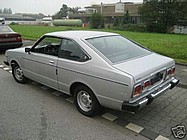

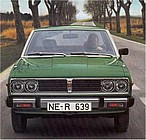

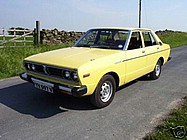
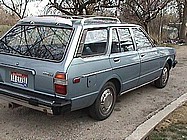
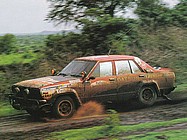
Hello! I am a owner of a C32 Laurel and Datsun / Nissan enthusiast. i run a classic car restoration and race preperation workshop in Essex, I look after two Datsun Rally cars a 240z and a Violet. I am looking for some parts and advice for the Violet and wondered if you could help.
Thanks Laurence
Hi Laurence,
I might be able to help with information and parts or contact for parts. I’ll drop you an email directly.